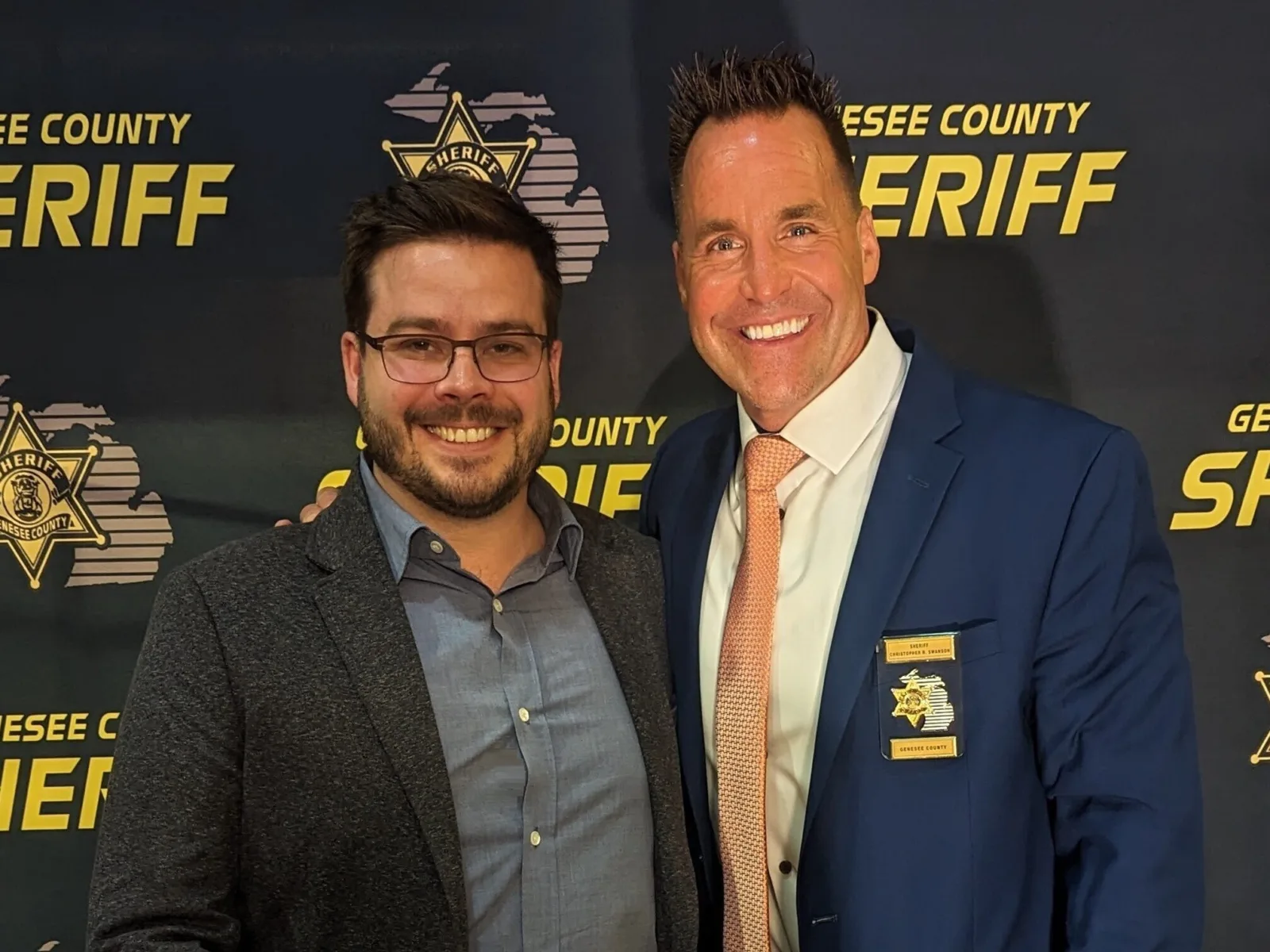America leads the world in gun ownership and has one of the highest rates of gun deaths in the developed world. As The Washington Post reports, last year was America’s deadliest for gun violence in two decades, and this year is on track to be even deadlier. This week, criminal justice researchers and policymakers from all over the world came together at the Stockholm Criminology Symposium to explore approaches to preventing gun violence. AV’s resident gun violence expert, Asheley Van Ness, along with a panel of grantees from the RAND Corporation and NORC at the University of Chicago, discussed the role philanthropy plays in building a body of research to support evidence-based gun policy. We asked Van Ness to take part in a short Q&A on the symposium and what steps are needed to address this public health crisis.

Arnold Ventures
We’re seeing more and more headlines about rising gun violence across the United States. Vox recently asked whether the growing numbers of firearms on our streets could be a contributing factor to the increase in murders in 2020. What do we know about how to answer that question?
It is complicated. I would first point to a report by Thomas Abt, director of the National Commission on COVID-19 and Criminal Justice, and Rick Rosenfeld, professor emeritus at the University of Missouri-St. Louis, showing that homicides rose sharply in 2020. Homicide rates were 30% higher than in 2019, an historic increase representing 1,268 more deaths in the sample of 34 cities than the year before.
While we don’t have a definitive answer to why homicide increased, Abt and Rosenfeld state that is likely due to the overlapping crises of the COVID-19 pandemic, social unrest around police violence, and other factors. The report calls on policy makers to address the pandemic, police legitimacy, and violent crime simultaneously: First, restart proactive violence reduction efforts that may have been slowed. Second, engage earnestly with the crisis in policing. Finally, continue to provide COVID-19 vaccines to community-based workers who work to curb violent street crime.
At the same time, we did see a trend regarding an increase in gun sales. And while it is difficult to assess any cause and effect at this time, experts are digging into this topic. For example, last year, researchers at UC Davis released a study of the initial increase in gun sales — an estimated 2.1 million extra sales from March to May — and concluded there was a link between short-term increases in sales and shootings.
More research is needed on the topic, and the National Collaborative on Gun Violence Research (NCGVR) recently funded a team at UC Davis to analyze two decades of crime gun recovery and theft records for the state of California, linked to in-state handgun sales and transfers of ownership. While the study is focused on California, the work will generate insight into crime gun sources and the transition of firearms purchased in the legal market and then used in crimes, helping to support new and better-informed policy and enforcement initiatives in the U.S.

Arnold Ventures
Tell us a little about what you presented at the symposium and the main message you wanted people to take away.
I had an opportunity to discuss Arnold Ventures’ gun violence research and data infrastructure portfolio, its advocacy strategy around federal funding, and the implications on the broader field.
The main takeaway is that despite substantial public concern, the U.S. is struggling to effectively address its current epidemic of gun violence because the federal government, our biggest research funder, has significantly underinvested in gun research for more than two decades.
America spends more research money studying peptic ulcers than it does studying gun violence. As a result, we don’t know whether better background checks might prevent accidental shootings. We don’t even know how many guns are circulating in the United States right now. Good research requires good data, but unlike the database of motor vehicle fatalities, the systems tracking firearm casualties are incomplete. As any research expert will tell you, answering crucial questions about how to prevent an epidemic requires good data and robust research. We need a national data collection effort and a rigorous gun violence research program — efforts only the federal government is in a position to support. The consequences have implications beyond the U.S.: Underfunded research and data systems leave considerable gaps in the ability to study gun violence, and as a result there are very few researchers who spend the majority of their time on gun issues.
In response, Arnold Ventures launched the National Collaborative on Gun Violence Research (NCGVR) with the RAND Corporation and committed $20 million to advance scientific research on gun policy in addition to launching a national expert panel on firearms data infrastructure with NORC at the University of Chicago. At the same time Arnold Ventures has called for more federal funding to support research at a scale commensurate with the problem — something only the federal government has the power to do.
New federal funding that was allocated the past few years is welcome and needed, but there is still enormous ground to be made up to build the evidence base needed to support fair and effective gun policies.

Arnold Ventures
What do you want to see happen policywise around gun violence prevention going forward?
After each mass shooting, lawmakers debate a familiar menu of gun control policies. Yet no major reforms have passed Congress since 1994 — and the killings continue. Today, it is still hard to find sufficient political support for laws to be enacted.
But we do not need to wait for the perfect political conditions as we have solid evidence for some gun safety laws.
For example, through the work of RAND’s Gun Policy in America initiative, researchers found that Child Access Prevention (CAP) laws stand out as meeting the highest evidence-based standard as to their effectiveness. The evidence is that such laws reduce suicide and unintentional injury among young people. CAP laws regulate the liability of adults who leave unsecured weapons within the reach of children. RAND’s findings are highly important as gun-related injuries are the second-leading cause of death for children and young adults.
We believe that having more and better research may help develop political consensus — agreeing on facts about gun policies is a good first step, and if we had more information about what is credibly known, we may make more progress.
It should also be pointed out that everyday gun violence has continued to increase this past year, and neither public narratives nor research focus enough on the fact that community gun violence disproportionately impacts communities of color. The greatest hope is the momentum behind community violence intervention strategies such as hospital-based violence interventions and violence interruption programs, and it is promising to see that the current administration pledged a substantial commitment in funding to sustain or expand community-based violence intervention programs in cities most impacted by community violence.

Arnold Ventures
Were there any presentations in the symposium that stuck with you or that you want to highlight for our readers?
There were so many great presentations sharing the latest research findings of importance for gun and crime policy. I did want to mention another presentation on my panel by Roseanna Smart from the RAND Corporation highlighting the work of Gun Policy in America called “The Science of Gun Policy: A Critical Synthesis of Research Evidence on the Effects of Gun Policies in the United States.”
Roseanna spoke about RAND’s work on a systematic review of the literature published since 1995 evaluating the effects of 18 classes of gun laws in the United States on eight outcomes: violent crime, suicide, unintentional injury and death, mass shootings, defensive gun use, hunting and recreational gun use, officer-involved shootings, and the gun industry. Their broad search strategy covered 13 electronic literature databases and identified 21,700 articles, 123 of which met our inclusion criteria of using comparative pre-post designs for causal inference.
The team found supportive evidence — their strongest evidence rating — that stand-your-ground laws increase firearm homicides and that child access prevention laws reduce self-inflicted fatal or nonfatal injuries among youth. They also found moderate evidence that state laws prohibiting gun ownership by individuals subject to domestic violence restraining orders decrease total and firearm-related intimate partner homicides, and that waiting period requirements reduce firearm suicide and total homicides. However, for many policies, current science is inconclusive or non-existent about their effects, with particularly scarce research to inform how policy influences officer-involved shootings, defensive gun use, and hunting or sport shooting. She highlighted the need for improvements in both methodological approaches and systematic data collection to better support firearm-related research.






















